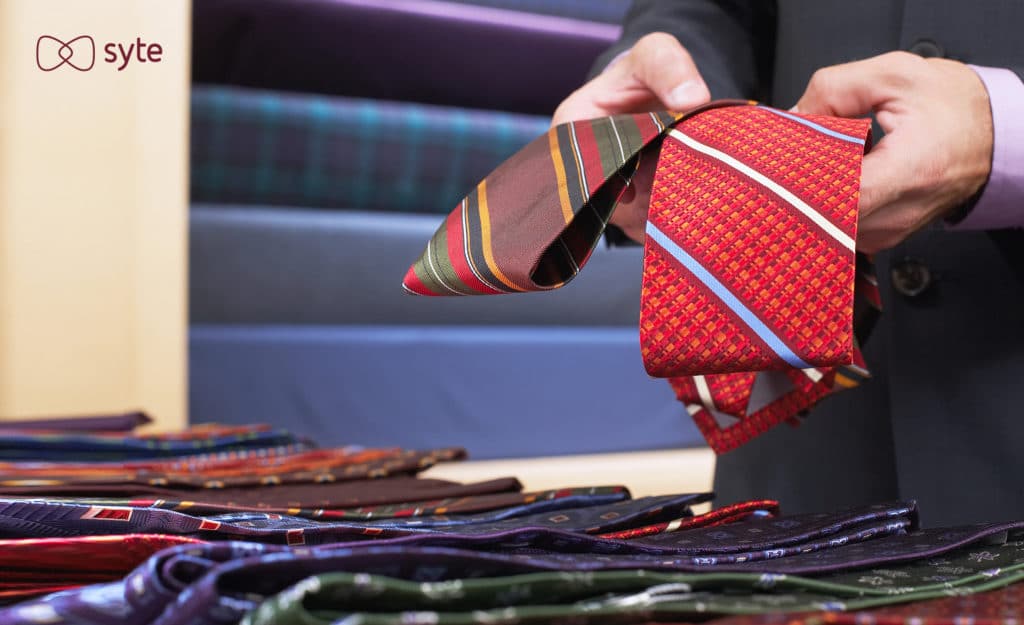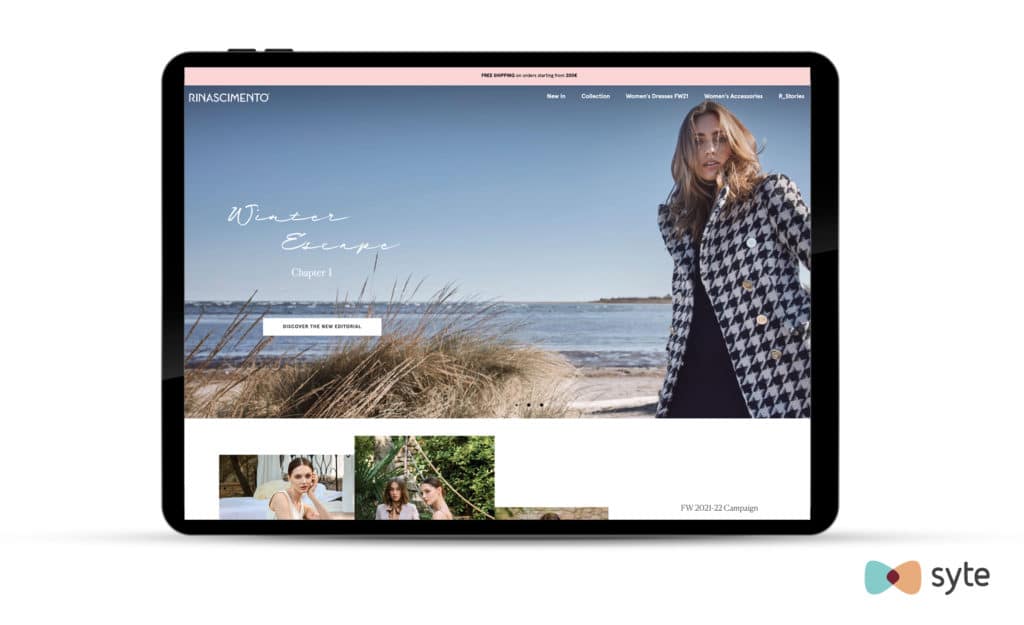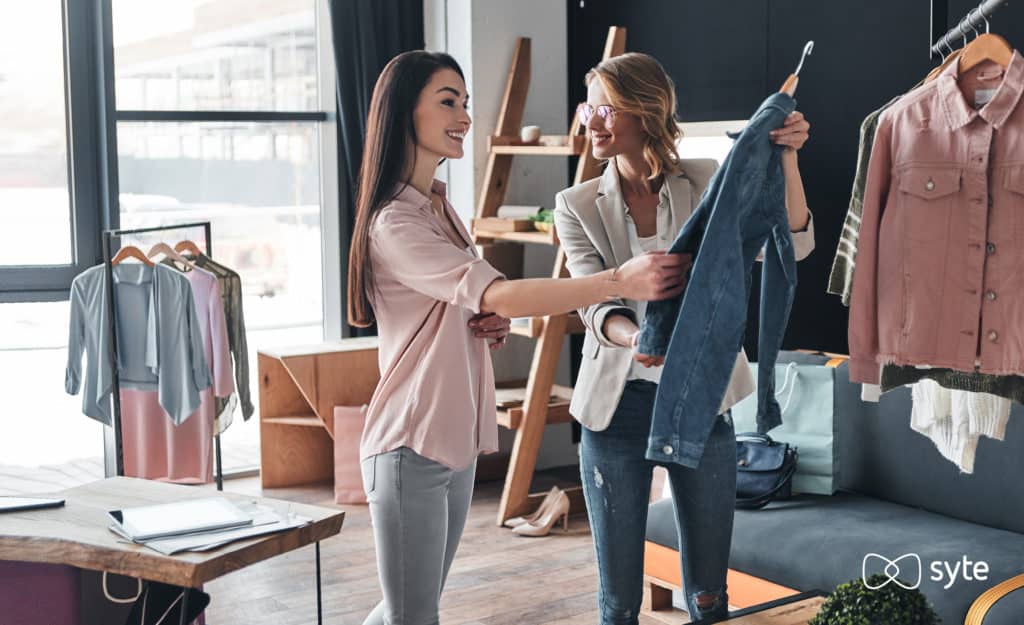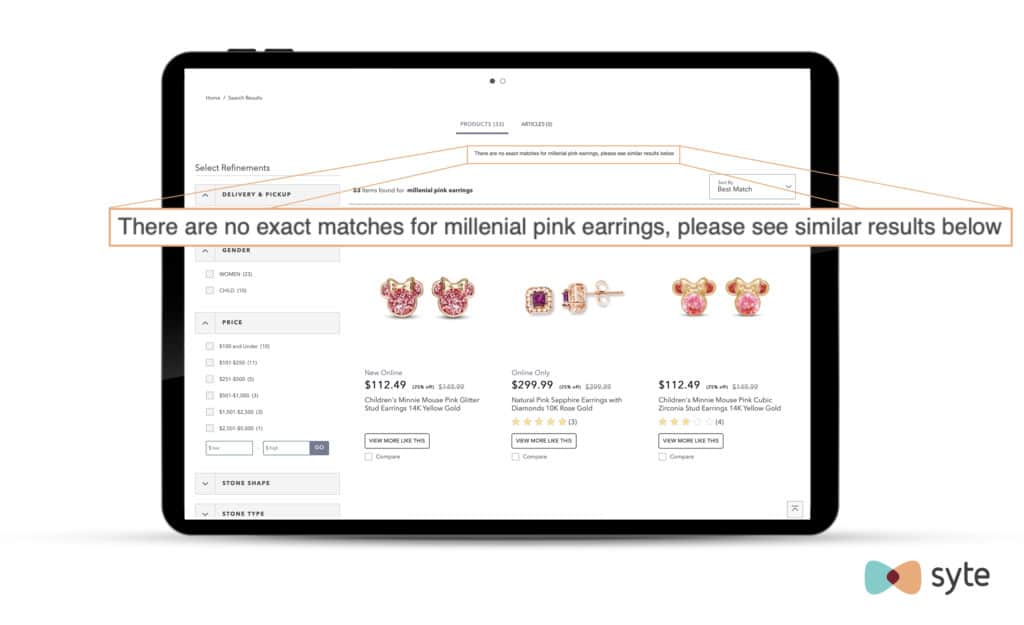When you want to purchase a new item, how do you sift through tens, hundreds, or even thousands of choices? In brick-and-mortar stores, you consult the owner or a salesperson and ask for suggestions. Online, you rely on the power of product recommendation engines—a technology that can make or break the entire shopping experience.
A poorly executed recommendation carousel with unattractive products or items in the wrong price range can easily make you jump ship to another site. On the other hand, a positive experience with highly relevant suggestions can make you feel like you’re shopping with your best friend — someone who knows you and the styles and price points that suit you.
In this blog, we’ll explain how an effective product recommendation strategy can set online brands and retailers up for successful, long-term customer relationships. We’ll also provide practical tips on where and how to implement recommendations on your website. Let’s go!
What Are Product Recommendation Engines?
A product recommendation engine is a filtering system that uses algorithms to endorse items or content that can encourage a customer to complete a purchase. The suggestions can be based on different factors, such as a shopper’s current and previous on-site behavior, personal preferences, the behavior of other similar customers, and customer ratings.
An effective product recommendation engine is the virtual equivalent of getting a recommendation by a salesperson, family member, or a friend. It avoids overwhelming shoppers with too many choices and eliminates the need to go through pages and pages of products just to find the one item they’ll love.

Done right, product recommendation engines benefit both sellers and customers. For brands and retailers, the technology can help increase conversion rates and basket size. For shoppers, the personalization it affords improves the overall customer experience by letting consumers find the products they’re looking for at the exact moment they are inspired to buy.
The Connection Between Website Recommendation Engines and Product Discovery
Product recommendation engines point customers in the right direction, surfacing the most relevant items based on their previous and real-time browsing behavior. Because the system continuously adapts to give shoppers accurate, intuitive, and personalized suggestions, effective product discovery can take place not only on product listing pages (PLPs) and product detail pages (PDPs) — it can also continue right through checkout.
As you win customers with personalized buying journeys, it makes your brand better equipped to establish lasting relationships that have shoppers coming back for more. In fact, 56% of online shoppers specifically said that they were more likely to return to sites that provide product recommendations.

Ultimately, these engines can have a significant impact on your bottom line. According to Science Direct, purchases via personalized recommendations are associated with a 29% increase in revenue. With the right system in place, you can create an engaging and highly individualized experience that implies you know your shoppers’ unique preferences and unspoken needs.
How to Improve UX With Strategic Placement of Product Recommendation Engines
Product recommendations sound simple, but they can have different benefits and impact depending on where they are incorporated into the online shopping experience. To implement an effective product recommendation strategy on your site, you need to consider each location for possible implementation. Here, we’ll take a look at what you can do to ensure that customers keep finding ideal products to add to their cart whether they’re at the start or end of their shopping journey.
Homepage
- Excite shoppers with fresh new content and promotions
Nothing is enticing about a page that stays fixed and unchanging. You can build interest in your brand by constantly updating your homepage with promotions for new products and collections, limited drops, seasonal items, and holiday sales. For example, see how Rinascimento attracts attention by promoting its winter collection at the top of the homepage.

Product recommendations on your homepage are an effective way to let shoppers take a peek at your inventory, especially when you have thousands of SKUs. You don’t even have to hand-pick items to showcase. Instead, the website recommendation engine, together with smart merchandising, can automatically refresh the list for shoppers every time they visit.
- Create continuity from social media to your website
There is no undermining the power of recommendations made by influencers or even mutual friends on social media. At least 49% of customers depend on influencer recommendations and 54% use social media to do product research. Your homepage can make these recommendations easily accessible by displaying a gallery of products and styles that are trending on social media. For example, Ardene has a dedicated section on its homepage for visitors who want to shop the latest looks on Instagram.

Product detail page
- Enable discovery of similar products
The most common use for recommendation engines is suggesting products that are visually similar to what shoppers are looking for. This allows consumers to discover more items with visually relevant attributes until they hone in on the perfect product. See how Oak+Fort does this by suggesting long sleeve black sweaters, sweatshirts, and t-shirts that are all similar in appearance but differ in subtle details.

- Increase basket size with complementary items
Once a shopper is further into their journey and already viewing a specific product, you can offer a “Shop the Look” carousel to enable them to see other items in the product photo that are complementary to the product they originally searched for. How does it work? The engine recognizes the shoppable items in a photo and finds exact or similar items. For example, when you search for a pair of men’s jeans on Venca’s website, you’ll see a “Complete the Look” recommendation carousel that provides the shirt, shoes, belt and bracelet that the pants model is wearing. This makes it simple for customers to purchase an entire outfit with just a few clicks.

- Attract attention from returning shoppers with familiar products
Not everyone who finds themselves on your site is a new visitor. When a returning shopper visits a product page, personalized recommendation engines can offer suggestions for other items that are predicted to appeal to their aesthetic preferences based on the categories and items they previously explored. For example, Harry Rosen has a recommendation carousel of items “You May Also Like” for returning customers.

- Help customers remember their shopping path
Some shoppers returning to your website will not be interested in starting from square one. Let them pick up where they left off by showing previously viewed items. When customers have access to their browsing history on your site, they can begin the purchase process again immediately.

- Keep product discovery going for out of stock items
The customer journey does not have to end when the item a shopper is looking for is unavailable. Imagine what happens in a physical store, where shop assistants would recommend a similar product when they run out of a particular article. Online, you can use recommendation engines to suggest related, available items that are in line with your customers’ browsing behavior. This makes sure that the shopping journey continues and the customer does not bounce.

- Promote social proof to increase trust
Trust is crucial in online shopping, especially in high ticket items such as furniture and jewelry. In fact, research shows that 93% of customers read online reviews before purchasing. This makes it crucial for brands to nurture shoppers with social proof, like customer reviews, testimonies of seamless and quick service, and other user-generated content that helps shoppers feel comfortable making a purchase. You can even merge social proof directly into your product recommendations by including user-generated star ratings above or below the product photos. When done right, adding social proof can create a sense of community that is akin to friends giving each other recommendations and picking out special items. For example, see how La Redoute posts user-generated photos on its PDPs so you can see what a product looks like outside of the showroom and inside real homes.

Shopping cart and checkout page
- Encourage spontaneous purchases with highly relevant recommendations
Before shoppers finalize their transactions, you can offer them one last opportunity to add items to their cart. You can show highly targeted recommendations for products that fit their preferences, complementary items to the products in their cart, or previously viewed items that customers might want to reconsider purchasing. Just remember, any product recommendations you add to the checkout page should not be so distracting that the user fails to complete the purchase.
Note: This technique can be especially effective during the holidays when customers are in the spirit of giving. On your cart or checkout page, you can add recommendations for gift cards or other products that add value to the purchase — like flowers for Mother’s Day, a discounted post-purchase service for items bought on Black Friday and Cyber Monday, and more.
404 and zero results pages
- Use product recommendations to avoid dead ends
When shoppers search but are presented with zero results, brands lose opportunities to convert. Recommendation engines can urge customers to continue the shopping journey with products that are similar but not exactly the same as the item they had in mind. See how Kay Jewelers still has recommendations for the search query even when there are no exact matches. Alternatively, you can also redirect customers to their previously viewed items.

Dynamic emails and ads
- Reduce abandoned carts with the right offers
The opportunity to entice customers to purchase does not stop the moment they leave your page. With dynamic ads, you can ensure that your brand stays top of mind with targeted suggestions for shoppers who have visited your site. This strategy is particularly effective when the shoppers’ buying intent is high, such as those who have added an item to cart but left your site before completing the purchase. For customers like this, you should consider promoting recommendations for similar products or offering discounts on previously viewed items through dynamic advertisements that prompt shoppers to return to their abandoned carts and proceed to purchase.
- Send personalized emails to nurture your customer relationships
Don’t lose sight of your customers. Draw them in with personalized emails. These can contain recommendations of similar products based on previous purchases and browsing behavior as well as relevant items you can use to upsell or cross-sell. With a robust personalized recommendation engine, you can even predict when new items or collections might be of interest to shoppers and then provide tailored suggestions for different individuals on your list. For loyalty program members, brands can invite users back with highly curated and exclusive deals. The more personalized the emails are, the more likely your customers will be to end up back on your site adding items to their carts.
The Key Thing to Look for in a Product Recommendation Engine
There is no underestimating the power of product recommendation engines. With a strong strategy in place, they make online shopping easy, seamless, and personal — delivering customer experiences that are worth remembering and repeating. However, not all product recommendation software is created equal. A poorly executed solution can easily recommend the wrong products, which could have an unpleasant and annoying effect on customers, and be a waste of real estate on your site. A delightful customer experience is anchored in choosing the right recommendation engine to provide truly personal suggestions.
That’s why quality will always trump quantity when it comes to product recommendation software. It’s critical to invest in a solution that can accurately and effectively predict what individual shoppers are most likely to buy based on their current and past live session data. This is much more effective than simply looking at their demographics (age, gender, location) and offering items that other similar shoppers have purchased. Beyond this, you can also analyze the granular product attributes that each customer interacts with to provide even more targeted suggestions for items in your product catalogue that match the exact look and feel that shoppers are looking to find. This kind of data can really separate your brand from your competition and help you create the most enjoyable, personalized user experience possible.